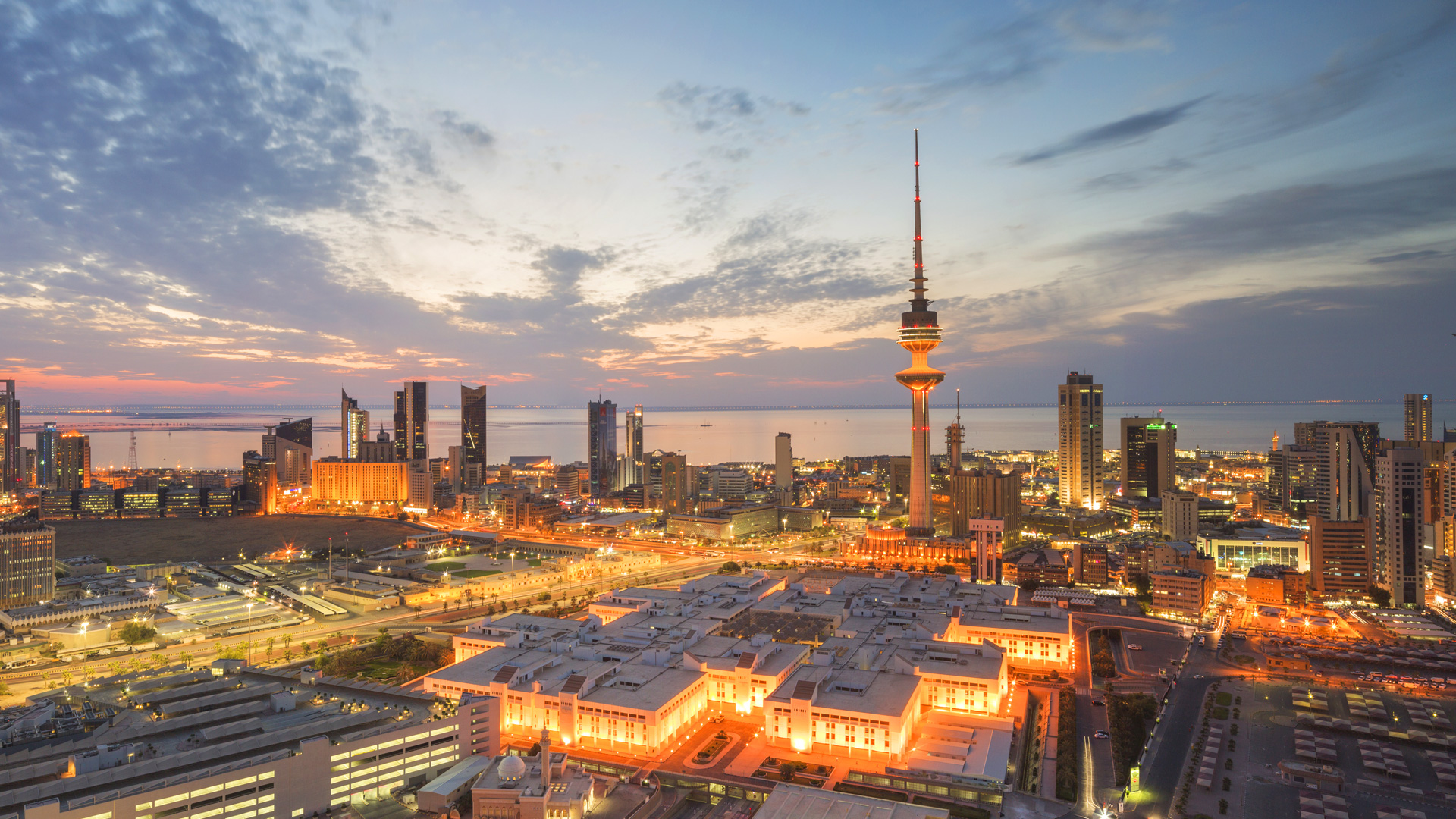Kuwait-based Photographer Sarah Alsayegh has found her niche as a ‘rooftopper’, photographing from the top of skyscrapers. Here she reveals how she goes about it…
When did you first start photographing cityscapes?
I fell in love with photography in 2005, when I started taking pictures as a hobby. I found that there was something captivating about capturing the beauty of what I saw in front of me. Perhaps it fits with my personality type, as I love the quietness and stillness of waiting for the perfect moment, as well as the challenge of scoping out an area for the best point of view and observing how the light changes. As someone who was born and raised in the Middle East, I had to look for a different kind of beauty in my country, the State of Kuwait.
The lack of ‘traditional’ landscapes there inspired me to seek out places that people rarely see, to show the world how a country in the Third World is evolving, with its new architecture and skyscrapers. Countries such as Dubai and Saudi Arabia are similarly inspiring.
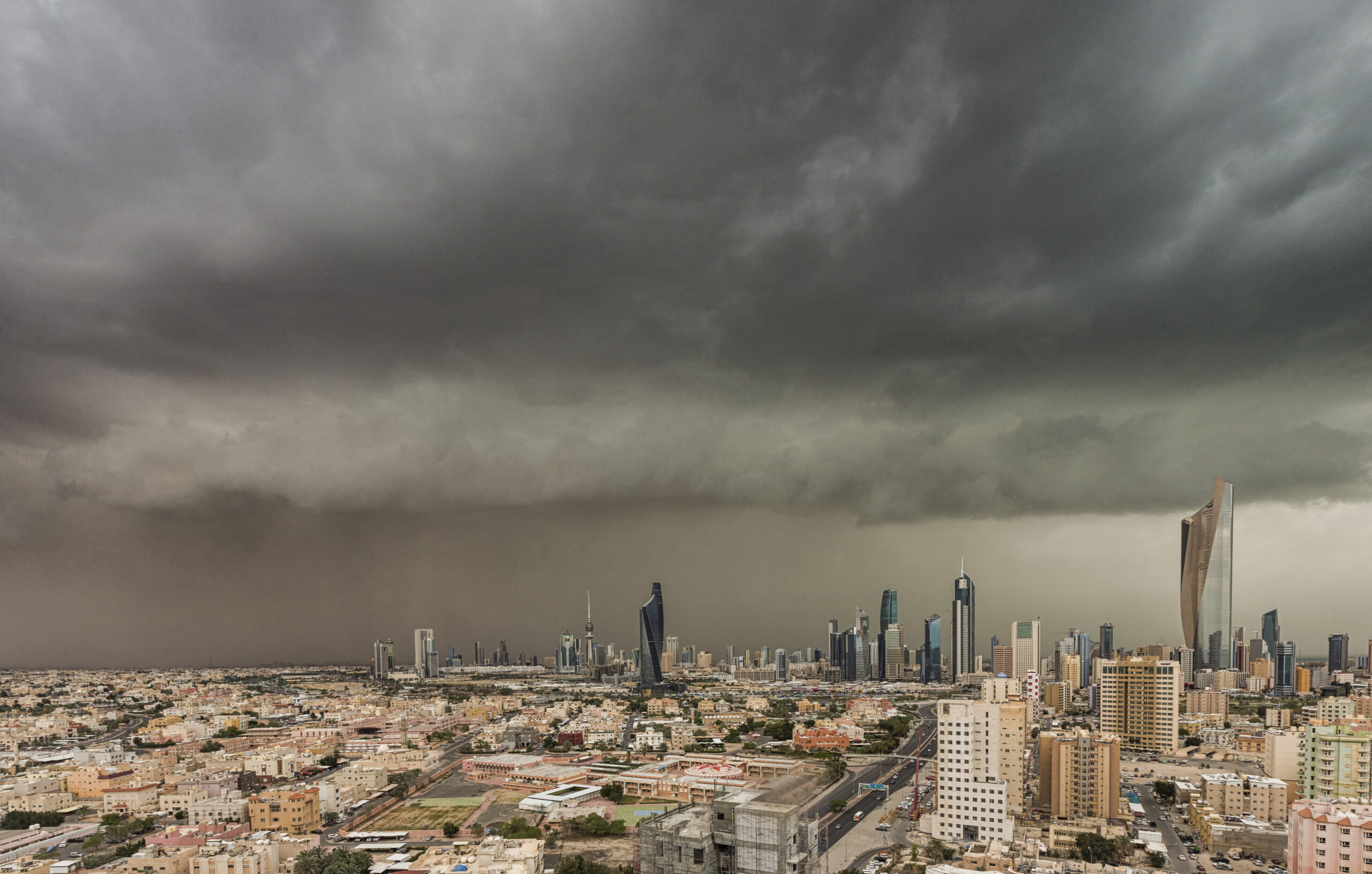
I received information that a dust storm was approaching, so I made my way to the building and waited an hour for the storm to approach from the north. Canon EOS 5D Mark III with Canon 16-35mm lens, ISO 125, 1/40sec at f/14, tripod, 0.9 ND soft grad
What is it about the city that inspires you?
I guess what inspires me most is how the natural light between ‘blue hour’ and sunset reflects through the windows of tall buildings and blends with the city lights. The blend of artificial and natural light works beautifully against man-made buildings and I love the way, for example, a long exposure shows not only the movement of sunlit clouds but also the lights of a busy highway. The combination creates an image of a bustling city that’s full of life.
What do you try to say about the scene in front of you?
It’s very simple. My main aim is always to show the world how beautiful my country is. It’s never easy to capture a perfect composition with the perfect light – it’s all about an exploration, both for me and for the person looking at the picture. It’s true that one view can speak a thousand words – whether that view is a landscape or a cityscape. For me, capturing the true beauty of natural light against city lights, and working to compose an image that people want to look at, is the main aim.
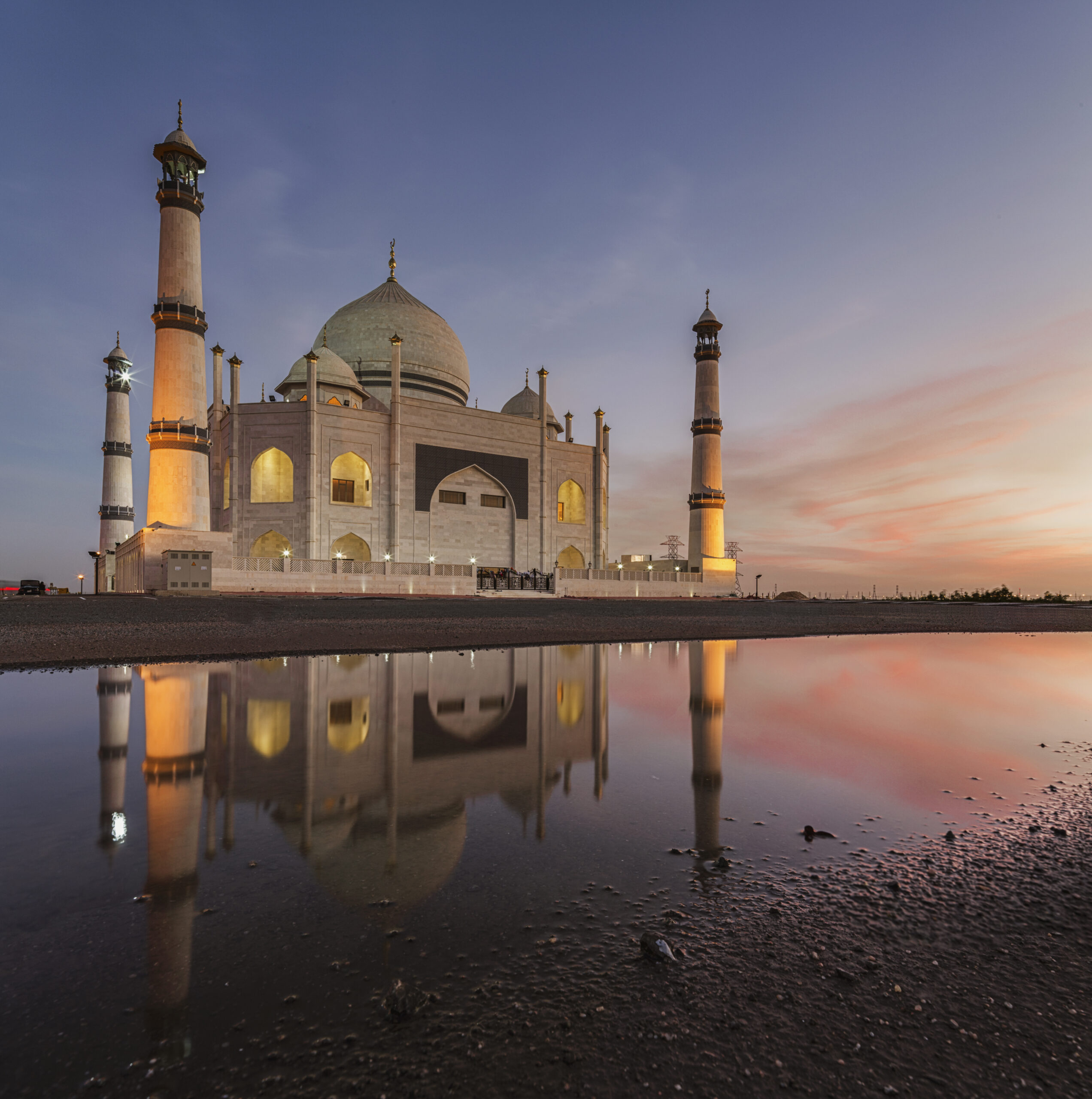
Using my TS-E shift lens, I took four pictures and blended them together to make a vertical view of the Fatima Al Zahra mosque. Fortunately for me, it had rained heavily the day before, giving me a perfect reflection in the foreground puddle. Canon EOS 5D Mark III with Canon 70-200mm lens, ISO 200, 20 seconds at f/18, tripod, 0.3 ND soft grad
Many of your cityscapes are shot from tall buildings – have you encountered any issues with access?
I am definitely a ‘rooftopper’! I love to see the city from the highest point as it helps me to capture what I see as the beauty of modern life, and to show just how high the skyscrapers are. However, there are always a lot of issues around access. Some skyscrapers require an official letter from a sponsor – as I’m freelance, I write a letter to request access and wait to see whether I get the approval of the security department. Once the permission is in place, I keep an eye on the weather conditions and, if I am lucky, I might get a good sunset. With some buildings, the process of obtaining permission is straightforward and I know of a few where, if the sunset looks promising, I can just call to say I’m coming.
Does it take a lot of recce work to know which views work best in certain conditions?
Sometimes, when scouting for a tall building with a view, it can be hard to know what the city looks like from the rooftop. Not only this, but sometimes the wall around the rooftop is too high to see over, or there isn’t a secure wall to stand behind. Where recces have paid off, however, is with photographing the legendary sandstorm known as the haboob. The haboob is a feature of the weather in this part of the world and I first photographed it in 2011. Since then, I have spent many hours studying it and working out the best places to photograph it, where I can show its size against the skyscrapers. Whenever I hear news of the sandstorm approaching Kuwait, I try to be in place and ready to capture it.

The weather conditions were not promising, but there was a sudden change, which brought in these clouds and the haze on the horizon. Canon EOS 5D Mark III with 16-35mm lens, ISO 160, 30 seconds at f/14, tripod
What, for you, makes an effective composition?
I always look for a ‘complete’ picture. As a country that is still evolving, Kuwait has not only modern architecture, but also many empty spaces and old buildings in between the skyscrapers. Thus, I tend to look for a composition that merges both modern and old.
What is it about the light at the end of the day that works so well for you?
The Middle East is extremely dry, of course. There are rarely any clouds and our summers are very dusty, so conditions are poor for most kinds of photography. However, on the rare occasions when the skies are clear, there can be amazing ‘blue hour’ light. This is the last hour before sunset, and is the best time for me to photograph. Time isn’t the only factor in deciding which rooftop to head for – direction and the sunset also play their parts. Autumn and winter tend to provide the best conditions and cloud formations, which are especially important when you want to make long exposures. Usually, when I’m granted access to a rooftop, I wait in my spot for around an hour, with my camera ready and set up on the tripod. That means I’m relaxed and ready to capture the perfect balance of natural and artificial light.
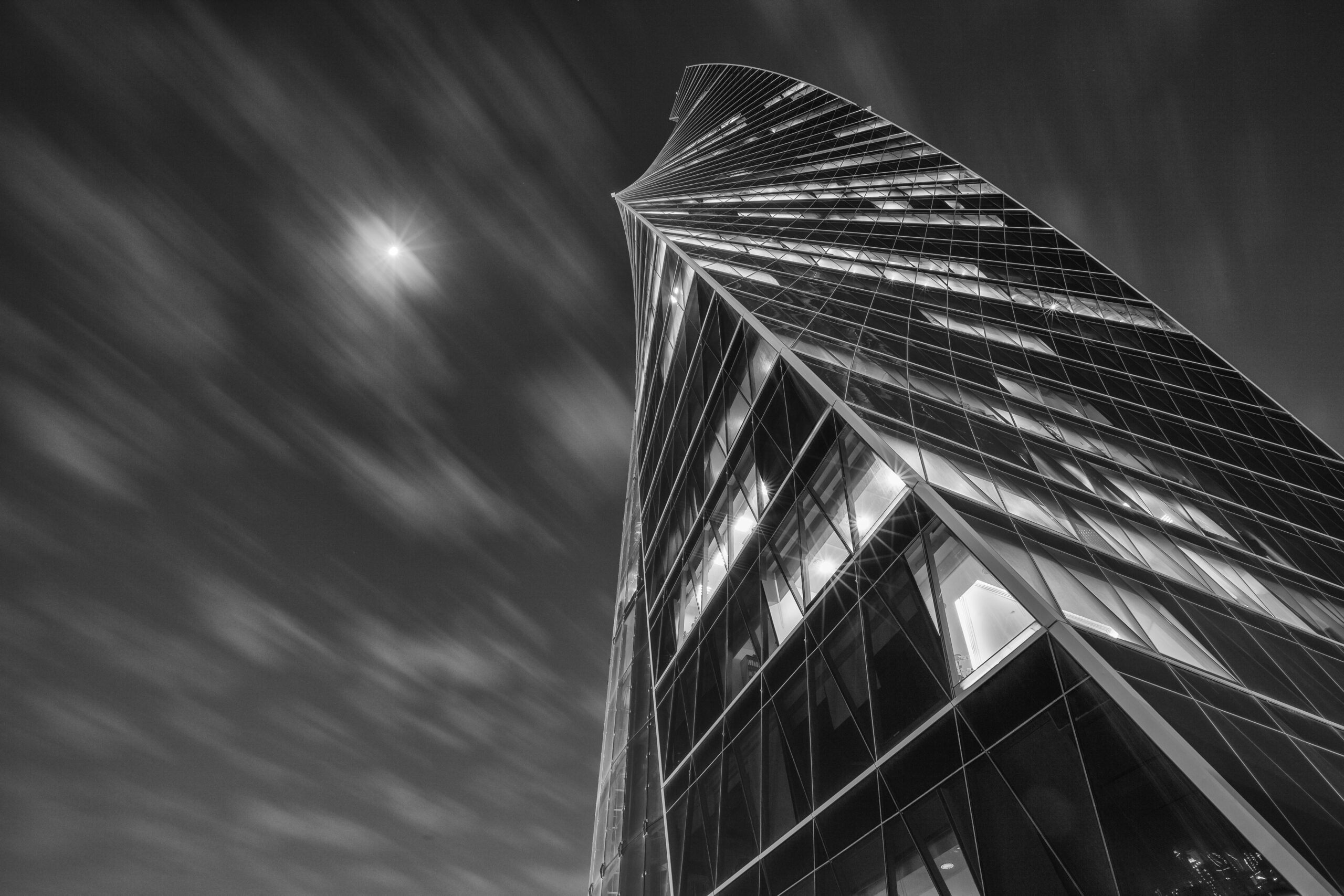
These three slender towers are an important symbol of Kuwait. I took this picture on the same day as the dust storm, but some hours before it hit. It’s unusual to take pictures around midday, but the conditions were just right for making an abstract. Canon EOS 5D Mark III with 16-35mm lens, ISO 100, 20 seconds at f/14, tripod, 0.3 ND soft grad
How many images can you hope to capture in one session?
It depends on the conditions. Sometimes, there might be a sudden change in the weather, which requires me to make a quick change in my position or exposure. In low light, I am happy if I capture three perfectly exposed pictures in differing light conditions.
If you see certain weather conditions developing, do you have locations you always head for?
The rooftops where I can get access on the same day are always the first locations to come to mind – particularly when it is the season for the haboob. But the urge to look for a new location and a new perspective is always there. So, during holidays and weekends, I go on the hunt for new rooftops, introducing myself to the security staff and asking their permission to check out the view from the top of the building.
What issues do you have to consider?
I always have to consider time and weather conditions when shooting in low light. If the sky is clear, then I will aim for an image that combines the city lights with car headlights. And if the weather is cloudy, I might choose to make a more abstract, long exposure image, perhaps after the sun has dropped below the horizon. This captures the balance between natural colour and city light. In cases such as these, I tend to use filters to help emphasise the drama of the skies.
What equipment do you use?
My main body is a Canon EOS 5D Mark III. I have four Canon lenses and try to vary them to get a different perspective each time. Needless to say, I do have a favourite – the 16-35mm zoom. If I’m shooting a panorama, I use the 24mm tilt-shift lens, as this avoids distortion. I carry a Benro Aluminium tripod (A1182TB0) with a ball head, and I use LEE Filters neutral-density grads – both hard and soft – as well as the Big and Little Stoppers and a circular polariser.
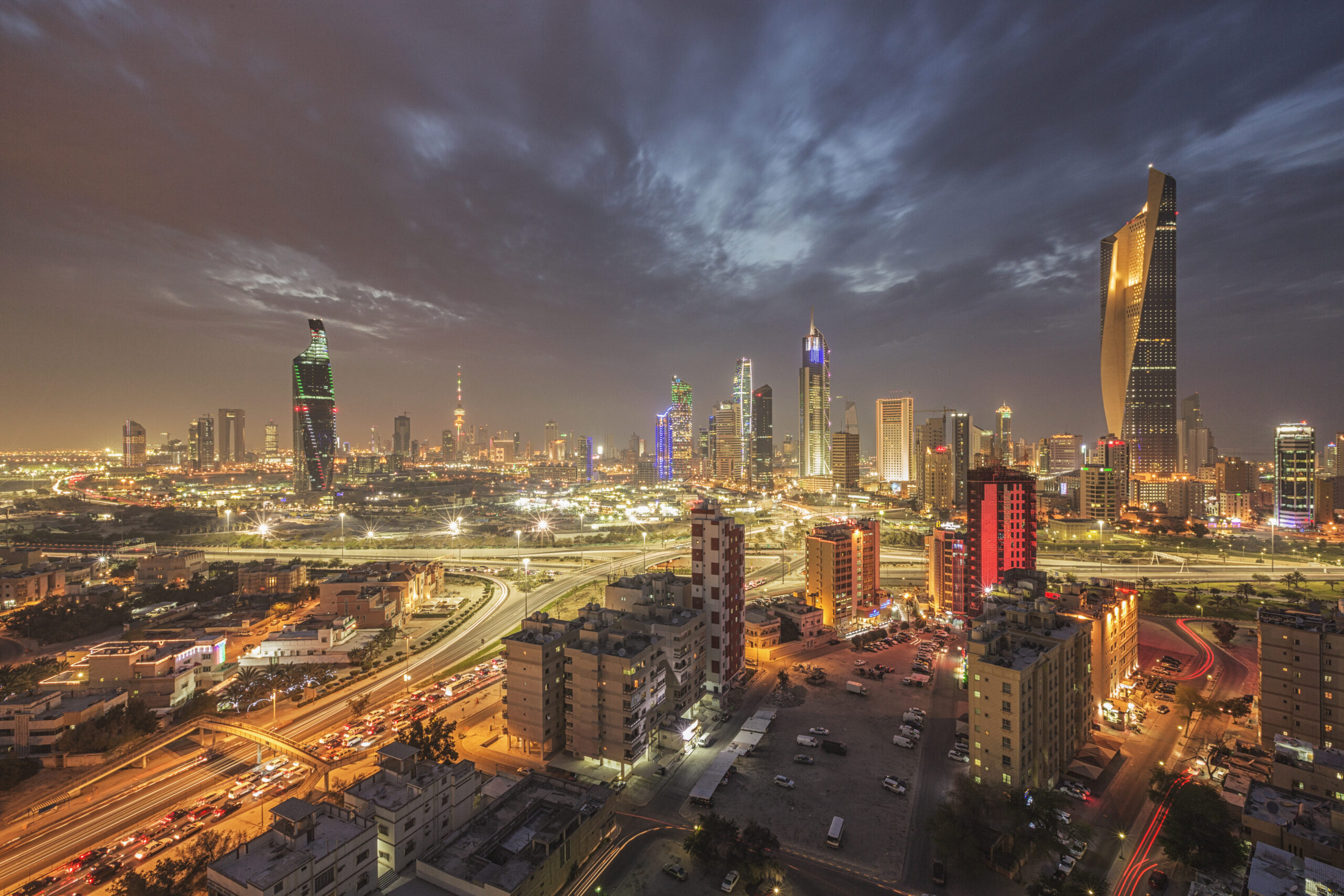
Before taking a trip to Dubai, I spotted this great point of view, with the railway bridge above, on a website. It was quite a tricky picture to take, because the security guards spotted that I, and two other local photographers, were taking pictures. Canon EOS 5D Mark III with 16-35mm lens, ISO 50, 20 seconds at f/16, tripod, 0.3 ND hard grad.
Which filters are most useful for your cityscapes?
For cityscapes I always tend to use the LEE Filters soft set, which is ideal for me. The 0.9 ND soft grad works well for cityscapes and I often combine it with a 0.6 ND hard grad. For long exposures and city abstracts, I use the Big Stopper to capture the motion of clouds against the buildings.
Do you do anything in postproduction with your images?
“Straight out of the camera” is my motto! I shoot in raw and process my images with Lightroom to correct any distortions and remove dust. If I need to enhance the contrast, I go with Nik Software (Color Effex pro 4) and if converting to black and white I use Silver Efex Pro 2. For me, it’s all about enhancing the natural, simple beauty of what was already there, and what I saw as I captured the picture.
For more of Sarah’s work visit: www.salsayegh.com
